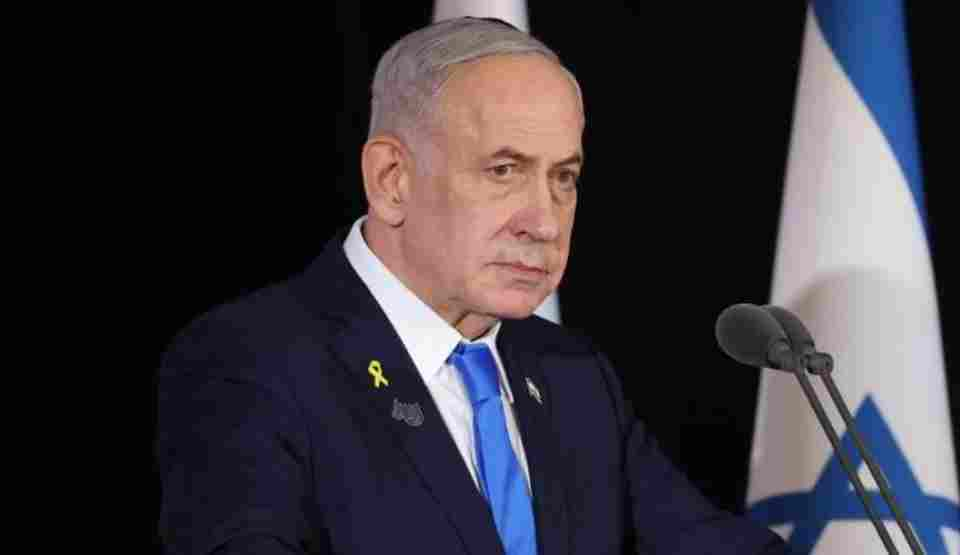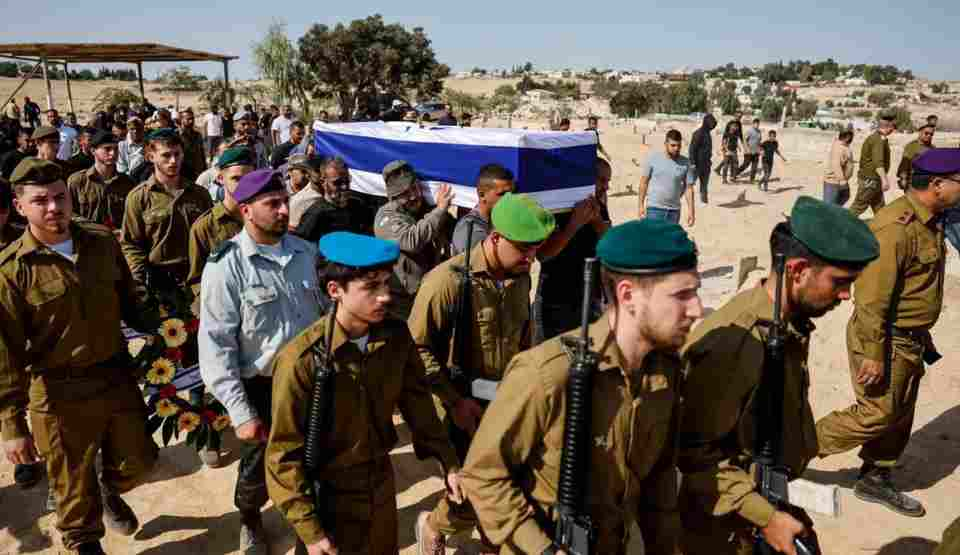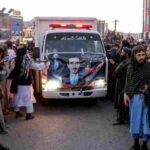Netanyahu’s Memorial Address
Israeli Prime Minister Benjamin Netanyahu delivered a resolute speech at Mount Herzl national cemetery in Jerusalem on Thursday, pledging unwavering determination to recover all deceased hostages still held in Gaza. Speaking at an official memorial ceremony commemorating the victims of the October 7, 2023 Hamas-led attack, Netanyahu emphasized Israel’s commitment to combating terrorism while addressing the nation’s growing frustration over the incomplete return of hostages’ remains.
The memorial took place two days after the Hebrew calendar anniversary of the devastating attack that shocked Israel and triggered the ongoing conflict. Standing before mourners and families of victims, Netanyahu declared, “Our fight against terrorism will continue with full force. We will not allow evil to raise its head. We will exact the full price from anyone who harms us.”
The prime minister’s remarks came merely hours after Hamas returned two more bodies to Israel, bringing the total number of deceased hostages recovered since Monday to nine out of twenty-eight. However, Hamas announced it was unable to locate the remaining nineteen bodies, a revelation that has intensified public outrage across Israel.

The Latest Hostage Returns
On Wednesday night, Hamas handed over two bodies to the International Committee of the Red Cross in a transfer supervised by masked Hamas gunmen in Gaza City. Israeli authorities confirmed Thursday morning that the remains had been identified as those of Inbar Hayman and Sergeant Major Muhammad al-Atarash. Their families, who had endured sixteen months of anguish and uncertainty, finally received the closure they had desperately sought, though their grief was compounded by the knowledge that nineteen other families remained in limbo.
The return of these bodies was part of the broader ceasefire agreement reached last week. Under the terms of this deal, all twenty living hostages were released on Monday in a carefully orchestrated exchange that saw Israel release 250 Palestinian prisoners from its jails along with 1,718 detainees from Gaza. The emotional scenes of reunions between freed hostages and their families provided brief moments of hope amid the broader tragedy, but the incomplete return of the deceased has cast a shadow over the agreement’s implementation.
Hamas’s Explanation and Israel’s Response
Hamas’s military wing, the Qassam Brigades, issued a statement on Wednesday explaining the difficulties in retrieving the remaining bodies. The group said it would continue searching for the deceased hostages but emphasized that the task would “require major efforts and specialist equipment.” The statement implicitly acknowledged the massive destruction across Gaza, where entire neighborhoods have been reduced to rubble, making the location and recovery of remains an extraordinarily challenging endeavor.
This explanation has done little to quell anger in Israel, where public sentiment demands the immediate return of all hostages, living or dead. The failure to retrieve all bodies in accordance with what many Israelis understood to be the terms of the ceasefire deal has been perceived as a violation, despite technical arguments about the agreement’s language.
In response to the delay, Israel has adopted a hardline stance, threatening to restrict the flow of humanitarian aid into Gaza. This threat represents a significant escalation that could deepen the humanitarian crisis in the territory, where the civilian population has already endured catastrophic conditions throughout the sixteen-month conflict.
The Ceasefire Agreement’s Ambiguities
The controversy over the hostages’ remains has exposed ambiguities in the ceasefire agreement itself. While the full text of the deal between Israel and Hamas has not been made public, a leaked version that appeared in Israeli media suggested that the agreement may have anticipated the possibility that not all bodies would be immediately accessible.
Two senior advisers to US President Donald Trump addressed this issue in a briefing with reporters, stating that the United States government does not currently believe Hamas has broken the agreement by failing to retrieve more remains. The advisers indicated that Hamas had acted in good faith by sharing information about the hostages with mediators, suggesting a level of cooperation despite the incomplete returns.
One senior US adviser pointed to Gaza’s massive destruction as a legitimate obstacle to the search efforts. The devastation across the territory, where entire city blocks have been obliterated by Israeli airstrikes, has created a landscape where locating specific remains becomes extremely difficult. The adviser also mentioned that rewards could potentially be offered to Gazans who provide information about the location of remains, acknowledging that local civilians might possess crucial knowledge that could aid the recovery efforts.
Domestic Pressure on Netanyahu
The incomplete return of hostages’ bodies has generated intense domestic pressure on Netanyahu’s government. The Hostages and Missing Families Forum, an organization representing the families of those still held in Gaza, issued a forceful statement calling on the government to “immediately halt the implementation” of the ceasefire deal until all nineteen remaining bodies are returned.
This demand reflects the deep frustration and pain felt by families who have waited sixteen agonizing months for news of their loved ones. For these families, the partial implementation of the hostage return feels like another betrayal, extending their suffering indefinitely. The forum’s call to suspend the ceasefire agreement entirely demonstrates the political volatility of the situation and the immense pressure on Netanyahu from his right-wing base to take a harder line.
The October 7 Attack and Its Aftermath
The current crisis stems from the horrific events of October 7, 2023, when Hamas-led gunmen launched a coordinated assault on southern Israel. The attack resulted in the deaths of approximately 1,200 people, including civilians, soldiers, and foreign nationals who were attending a music festival or living in kibbutzim near the Gaza border. The attackers also took 251 people hostage, dragging them back into Gaza in scenes that shocked the world.
Israel’s military response was swift and overwhelming. The Israeli Defense Forces launched an extensive military campaign in Gaza aimed at destroying Hamas’s military capabilities and recovering the hostages. The operation has involved massive airstrikes, a ground invasion, and the displacement of most of Gaza’s 2.3 million residents.
According to Gaza’s health ministry, whose figures are considered reliable by the United Nations, at least 67,967 people have been killed by Israeli attacks in Gaza since the conflict began. The toll includes combatants and civilians, with a significant proportion being women and children. The health ministry does not distinguish between civilian and militant casualties in its count, though independent analyses suggest a substantial majority of the dead are non-combatants.
The scale of destruction in Gaza has been staggering. Entire neighborhoods in Gaza City, Khan Younis, and Rafah have been leveled. Critical infrastructure, including hospitals, schools, and water treatment facilities, has been damaged or destroyed. The humanitarian situation has deteriorated to catastrophic levels, with widespread food insecurity, disease outbreaks, and inadequate medical care.
Ongoing Violence Despite Ceasefire
Despite the ceasefire agreement that officially took effect on Friday, violence has continued in Gaza. Hamas has complained to mediators that more than twenty people have been killed by Israeli forces since the ceasefire began. These incidents have raised questions about whether Israel is honoring the spirit of the agreement, even if the letter of the deal permits certain military actions.
The Israeli military, which still maintains control over more than half of Gaza’s territory, has defended its actions by stating that it only opens fire to neutralize threats to its troops. Israel argues that its forces must protect themselves from attacks and that Hamas operatives continue to pose dangers even during the ceasefire period.
This interpretation of the ceasefire’s terms highlights the fragility of the agreement and the potential for its collapse. Each side appears to be testing the boundaries of what is permissible, with Hamas accusing Israel of violations while Israel insists it is acting within its rights to self-defense.
The Exchange of Bodies
While Israel awaits the return of its deceased hostages, work is underway in Gaza to identify Palestinian bodies that Israel has returned in recent days. These returns are part of the broader exchange arrangement that accompanied the ceasefire deal.
On Thursday, Israel returned an additional thirty Palestinian bodies, bringing the total number returned to 120. Many of these are believed to be the remains of Palestinians who died in Israeli custody or whose bodies were retained by Israeli authorities for various reasons, including allegations of involvement in attacks against Israelis.
For Palestinian families, the return of these remains provides an opportunity for proper burial according to Islamic tradition, ending months or even years of uncertainty. The process of identification, however, is complicated by the condition of the remains and the lack of adequate forensic facilities in Gaza, where the healthcare system has been severely degraded by the conflict.
The Rafah Crossing Controversy
Another point of contention in the implementation of the ceasefire deal concerns the reopening of the Rafah crossing between Gaza and Egypt. There had been reports suggesting the crossing would reopen on Thursday, but this did not materialize as expected.
The Rafah crossing has been closed since May 2024, when Israeli forces seized control of the Gaza side of the border terminal during their military operations. Before its closure, Rafah served as Gaza’s primary connection to the outside world for people, though not for commercial goods, which primarily entered through other crossings controlled by Israel.
The ceasefire agreement specifies that Rafah’s reopening would be “subject to the same mechanism implemented” during a temporary ceasefire earlier in 2024. During that brief respite, wounded Palestinians were allowed to pass through Rafah to receive medical treatment in Egypt, providing a lifeline for those with injuries too severe to be treated in Gaza’s devastated healthcare system.
On Thursday, an official from Cogat, the Israeli military body that coordinates government activities in the Palestinian territories, announced that “the date for the opening of the Rafah crossing for the movement of people only will be announced at a later stage, once the Israeli side, together with the Egyptian side, completes the necessary preparations.”
The official also clarified that “aid will not pass through the Rafah crossing,” emphasizing that humanitarian assistance would continue to enter Gaza through the Kerem Shalom crossing in southern Israel and other border points, all of which require Israeli security inspections. This arrangement gives Israel significant control over what enters Gaza, a point of ongoing controversy given the humanitarian crisis in the territory.
The Path Forward
As the ceasefire enters its second week, its future remains uncertain. The controversy over the incomplete return of hostages’ bodies has created a potential flashpoint that could undermine the fragile agreement. Netanyahu’s vow to continue fighting terrorism “with full force” and to exact a “full price from anyone who harms us” suggests Israel remains prepared to resume military operations if it deems the ceasefire has failed.
For the nineteen families still awaiting the return of their loved ones’ remains, each day brings renewed anguish. The technical and logistical challenges of locating bodies amid Gaza’s vast destruction are real, but for grieving families, explanations offer little comfort.
Meanwhile, in Gaza, more than two million people face an uncertain future. The ceasefire has brought a temporary halt to the bombing and fighting, but the humanitarian crisis continues. Access to food, clean water, medical care, and shelter remains severely limited. The question of reconstruction and how Gazans will rebuild their shattered lives looms large. The international community, led by the United States, continues to play a mediating role, attempting to preserve the ceasefire while addressing the concerns of both sides. The coming days will be critical in determining whether this agreement can hold or whether the region will slide back into conflict, adding more victims to an already devastating toll.RetryClaude can make mistakes. Please double-check responses.






